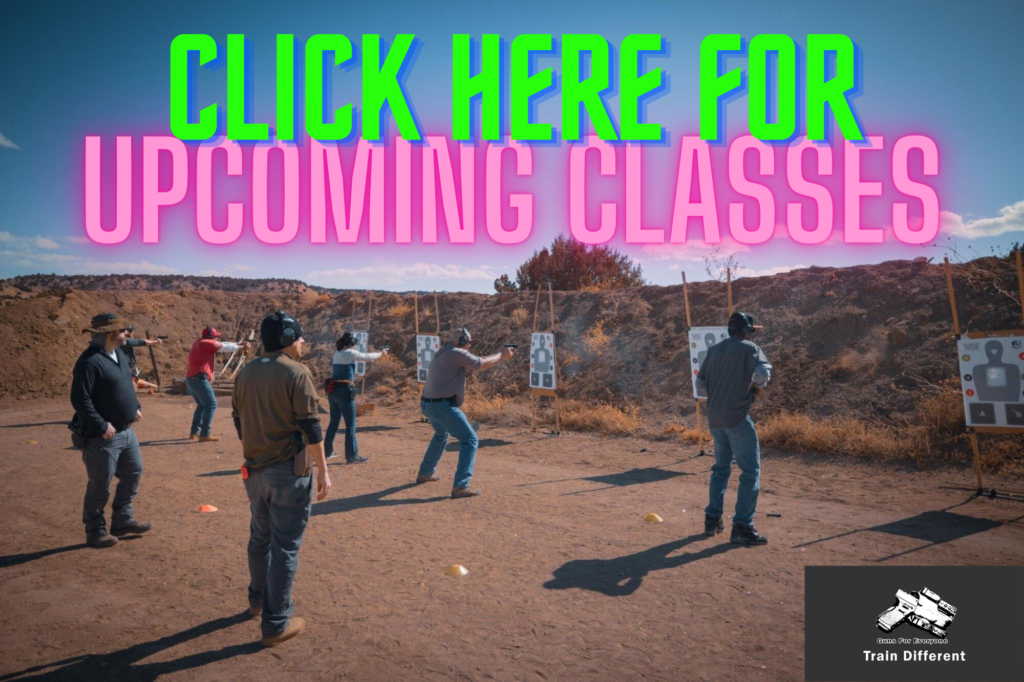One question that we get all the time in our Free Concealed Carry Classes is “What is the definition of concealed under Colorado law.”
Its an important question asked by people who are conscious about following the law. But In Colorado, the answer is not as easy or intuitive to find as people would hope.
The starting place to look for clarification is C.R.S. 18-12-105: Unlawfully Carrying a Concealed Weapon
(1) A person commits a class 1 misdemeanor if such person knowingly and unlawfully:
(b) Carries a firearm concealed on or about his or her person.
The statute goes on to show that it shall be an affirmative device if the person has a valid concealed handgun permit or is in their home, vehicle or their own business.
This state does not provide a definition of “concealed” here. It just says it’s against the law. But if we move down to the relevant case law referenced below the statute, we are directed to two important cases that provide a definition.
The first part of the definition of concealed is based on a case involving a 15 year old juvenile who was approached and then chased by police officers (https://casetext.com/case/people-v-or-1). While he was running away, the arresting officer saw the silver handle of a handgun sticking out of his back pocket. The officer went on to testify that he could tell that this was a firearm and the juvenile was charged and convicted of unlawfully carrying a concealed handgun.
The state court of appeals eventually overturned this conviction based on the interpretation of concealed as a weapon “carried on or about the body in such a way as the weapon is not readily discernible” as a firearm. Essentially, how could the police officer say that he saw the gun while also making the argument that it was concealed? The court overturned the conviction based on this analysis.
“For these reasons, we conclude that the juvenile court erred in determining that a partially concealed but readily discernible firearm is “concealed” for purposes of section 18-12-105(1)(b). We further conclude that the evidence was insufficient to prove beyond a reasonable doubt that O.R. carried, or even attempted to carry, a concealed firearm on or about his person.”
In our classes a variation of the question of when the gun is concealed includes, “What if I’m walking from the gun store to my car and the gun is in a case.”
Case law provides the second important part of the definition of concealed . Pueblo vs Sanders, 1962, affirms that intent must be part of the criminal activity when the offense is carrying a firearm unlawfully concealed. The defendant here was charged with unlawfully carrying concealed when he was carrying the gun as an article of merchandise. The Colorado Appeals court found that:
“The offense of carrying a concealed weapon forms no exception to the general rule that to constitute a crime there must be a criminal intent. . . . In trials for the offense of carrying a concealed weapon, it should be borne in mind that guilty intent is the intent to carry the weapon concealed, and does not depend upon the intent to use it.” (Emphasis supplied.)”
What does this mean for you? Simply put, if there is an intent to conceal the gun, and the gun is not readily discernible as a firearm, it is concealed.
My personal advice here is to not try to ride a line between lawful and unlawful carrying. If you are going to carry open then do it in an obvious way. If you’re carrying concealed, keep that gun well concealed.
join us for a free concealed carry class by checking our class calendar at https://concealedcarryforfree.com.


